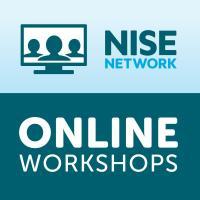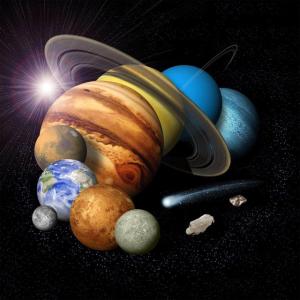
Date
The NISE Network runs a series of free online workshops to increase the number of professional development opportunities available to our partners, and create more channels for partners to share their work and learn from each other directly.
The Science Behind the 2018 Explore Science: Earth and Space Toolkit - Exploring Earth and the Solar System
Tuesday, February 27, 2018; 2 - 3pm Eastern / 11am - 12pm Pacific
This online presentation and discussion covers the science behind four of the 2018 Explore Science: Earth & Space toolkit activities - Magnetic Fields, Craters, Paper Mountains, and Stomp Rockets. After a brief overview of each activity and its materials, our guest presenter, a space scientist and science educator, leads a discussion about NASA missions and research exploring phenomena shared by Earth and other planets of the solar system. Learn about how magnetism, erosion, and meteorites can change the surface of planetary bodies over different timescales. Science connections behind a different set of toolkit activities will continue in The Science Behind the Earth & Space Toolkit - Looking Beyond the Solar System online workshop on March 13, 2018 at 2:00 PM Eastern / 11am Pacific (sign up at: http://www.nisenet.org/events/online-workshop/online-workshop-science-behind-2018-explore-science-earth-and-space-toolkit).
Presenters
Darrell Porcello, Ph.D., NISE Net Earth & Space, Co-I
Laura Peticolas, Ph.D. Space Scientist and Science Educator
Frank Kusiak, M.A., NISE Net Western Regional Hub Leader
Lindsay Bartolone, M.S., NISE Net Earth & Space Content Expert
Workshop Resources
- View recording of 2-27-2018 online workshop (Vimeo)
- Online workshop summary of resources (PDF)
- Online workshop presentation slides (PDF)
Other Resources
- Explore Science: Earth & Space 2018 and 2017 digital toolkits available online: http://nisenet.org/earthspacekit
- Explore Science: Earth & Space toolkit training videos (including content, activity, and misconceptions): https://vimeopro.com/nisenet/explore-science-earth-space
Activity Demos
- Exploring Earth: Paper Mountains activity: http://www.nisenet.org/catalog/exploring-earth-paper-mountains-2018
- Exploring the Solar System: Craters activity: http://www.nisenet.org/catalog/exploring-solar-system-craters-2018/
- Exploring the Solar System: Magnetic Fields activity: http://www.nisenet.org/catalog/exploring-solar-system-magnetic-fields
- Exploring the Solar System: Stomp Rockets activity: http://www.nisenet.org/catalog/exploring-solar-system-stomp-rockets
- Stomp Rockets poster with instruments and atmosphere layers: http://www.nisenet.org/sites/default/files/exsci_space_rockets_poster.pdf
About the Project
- Learn more about the project: http://www.nisenet.org/space
- Explore Science: Earth & Space 2018 and 2017 digital toolkits available online: http://nisenet.org/earthspacekit
Acknowledgements
This material is based upon work supported by NASA under grant or cooperative agreement award number NNX16AC67A. Any opinions, findings, and conclusions or recommendations expressed in this material are those of the author(s) and do not necessarily reflect the view of the National Aeronautics and Space Administration (NASA).








